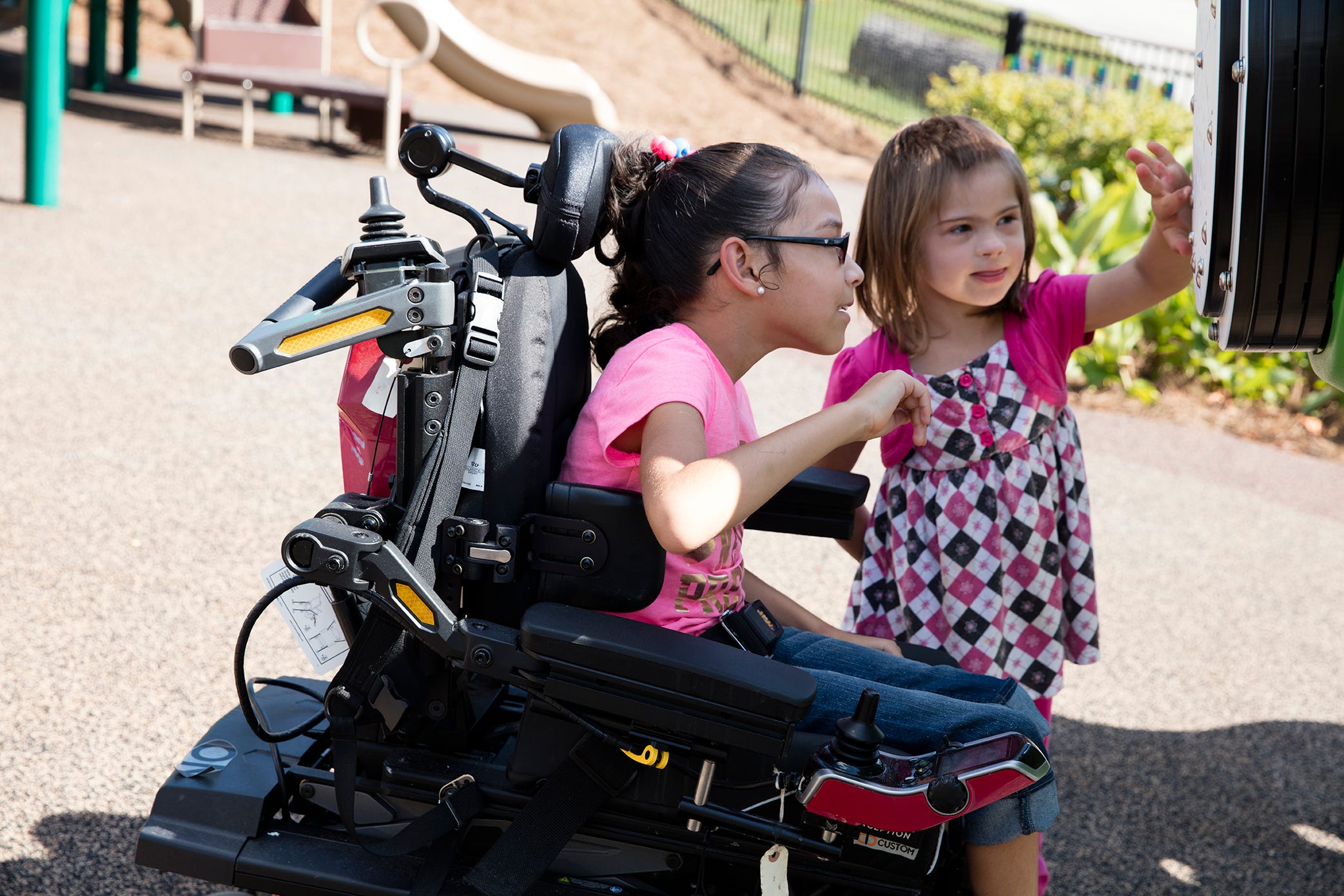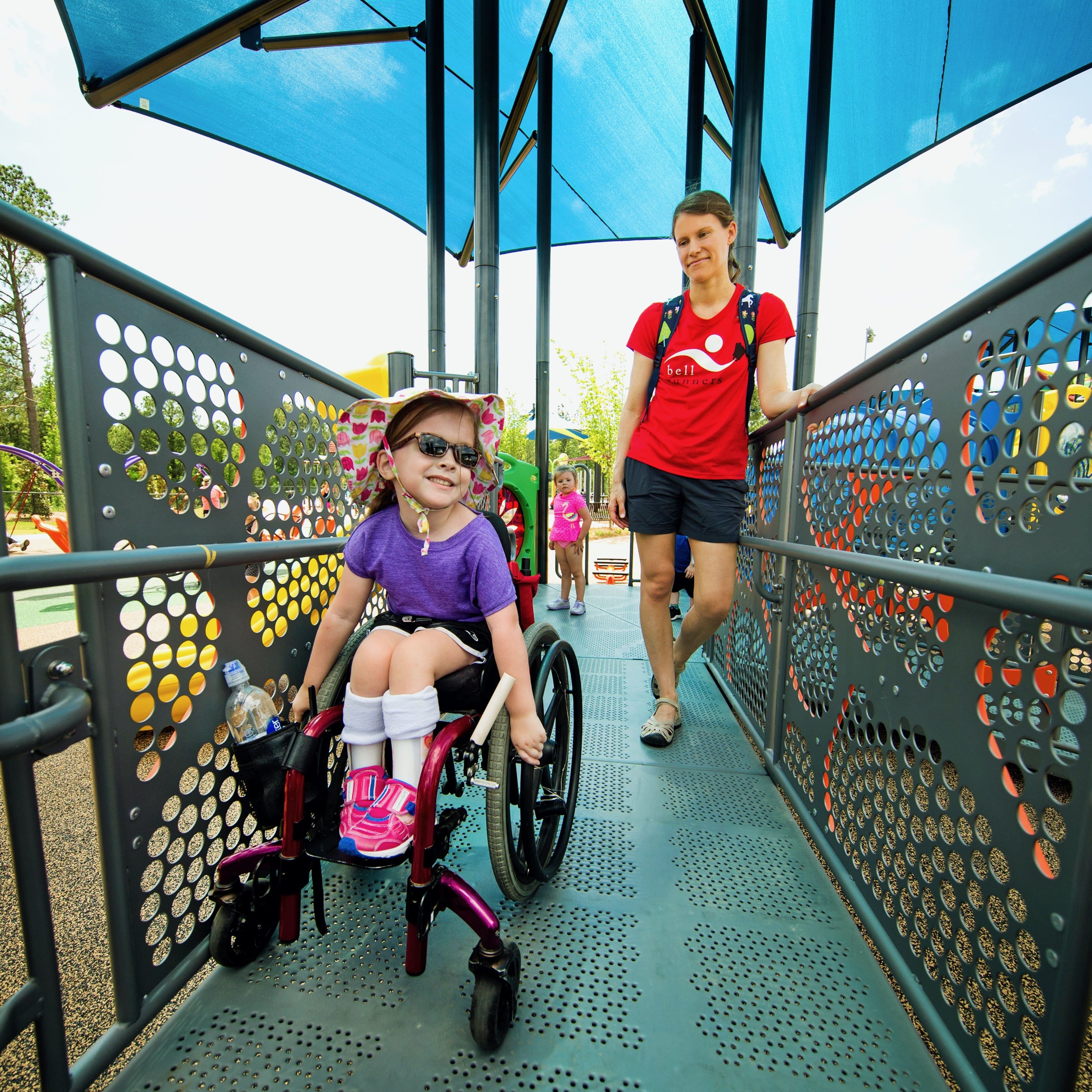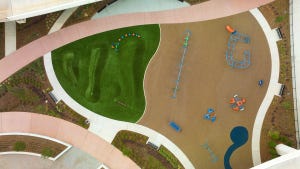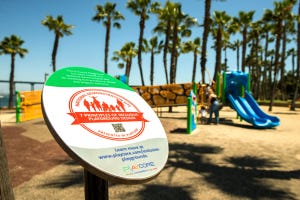Be Comfortable
This is the part seven of our seven-part series on inclusive playground design (View all posts in this series). Request a copy of Me2 to learn more about the Seven Principles of Inclusive Playground Design.
One of the key elements of making a play environment inclusive is creating a place that is comfortable for all users. Principle 7, “Be Comfortable,” addresses this very issue. The research, provided by Utah State University Center for Persons with Disabilities, describes the appropriate size and space that should be provided for approach and use so the play environment is comfortable for individuals with diverse sensory needs, body size, posture, mobility, environmental sensitivity, and motor control. Moreover, a play environment designed with Principle 7 in mind, recognizes the diversity of individual abilities and creates an environment which encourages users to stay longer and visit often. Here’s a closer look at how to design comfortable and inclusive play environments.

Approach & Reach Ranges
When designing an inclusive playground, consider the approach and reach for individuals who are seated or standing. Offer “half panels,” balcony panels, or activities with adequate space underneath that allow individuals using a mobility device to approach and easily reach the play activity while facing forward.

Include ground-level, accessible activities that provide front-reach capability
Music activities, talk tubes, and other freestanding components should also be installed at appropriate heights for intended users’ age ranges to facilitate ease of use and enjoyment.
Space for Movement & Gathering
As in most places, people need space to feel comfortable. On a playground, that means planning an appropriate amount of space for multiple users to engage in a play activity, assistive devices/equipment used by people in, on and around the playground, and/or personal assistance both on a play structure and at ground level.
 Design adequate space in the play area and include spacious play activities for multiple users
Design adequate space in the play area and include spacious play activities for multiple users
By designing adequate space throughout a play environment, you encourage social interaction between multiple users as they gather and move along decks, ramps and play activities.
Help Manage the Environmental Conditions
One of the most effective ways to ensure the comfort of people in a recreation area is to balance exposure and
relief to environmental conditions such as sunlight, shade, water, and wind. Start with using natural shade, such as existing or planted trees. Studies show naturalized play environments provide a wide range of social-emotional benefits for children and adults.

Shade structures on and throughout the play area keep people cool and comfortable, promoting longer periods of play
If natural shade is not an option, consider freestanding or integrated shade structures to offer relief from direct sunlight. Also look at other cooling options such as zero-depth water areas and/or water misters for cooling to meet the needs and preferences of diverse users.
Don’t Stop with Play Equipment
Round out the play environment with other amenities within comfortable proximity that will meet the various needs of users of all ages and abilities to enhance the user experience and promote interaction. Consider accessible water fountains, restrooms with adjustable changing tables and other care amenities, and accessible parking in close proximity to the play space. If possible, consider public transportation options available in your area when selecting a site for your inclusive playground. Part of making a space accessible is making sure people of all socioeconomic backgrounds can actually access the space.
And that covers all seven principles of Inclusive Playground Design. We hope you’ve found this series of blog posts informational and inspirational. Working together, we can create play and recreation spaces everyone can enjoy! To learn more about the seven principles of inclusive playground design request a copy of the complete Me2 guidebook or contact a GameTime representative in your neighborhood to explore inclusive play options for your community.
- Trails (27)
- Schools (180)
- Press Releases (102)
- Playground Funding (3)
- Play Science & Research (62)
- Parks & Recreation (339)
- Outdoor Fitness (138)
- National Demonstration Site (32)
- Landscape Architects (72)
- Inclusive Play (101)
- Daycare and Early Learning (62)
- Custom Play (37)
- College Campus (27)
- Churches (50)
- Challenge Course (30)
- Featured Projects (72)
- Site and Shade (6)





